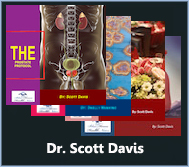What is the best job for a migraine sufferer?
The best job for a migraine sufferer depends on various factors, including the individual’s specific triggers, the frequency and severity of their migraines, and how well they can manage their condition. Here are some considerations and potential job options that may be suitable for migraine sufferers:
- Flexible Schedule: Jobs with flexible schedules can be beneficial for migraine sufferers, as they allow for adjustments in work hours or breaks when needed. Examples include freelancing, remote work, or jobs with flexible hours such as consulting, writing, or graphic design.
- Low Stress: Stress is a common trigger for migraines, so jobs with low stress levels may be preferable. This could include roles such as administrative assistant, librarian, or certain types of research positions.
- Minimal Sensory Stimulation: Migraine sufferers often experience sensitivity to light, sound, and smells. Jobs with minimal sensory stimulation may be more manageable, such as working in a quiet office environment, library, or laboratory.
- Work-from-Home Opportunities: Remote work options can provide migraine sufferers with greater control over their environment, reducing exposure to triggers such as fluorescent lighting or noisy office environments. Remote job opportunities may include customer service, data entry, or online tutoring.
- Healthcare Professions with Flexible Schedules: While healthcare roles can be demanding, some positions offer flexibility in scheduling. For example, registered nurses or physician assistants may have options for part-time or shift work, allowing for better management of migraine symptoms.
- Creative Fields: Jobs in creative fields such as writing, graphic design, or photography can provide opportunities for self-expression and flexibility in work hours. These roles may be suitable for migraine sufferers who thrive in creative environments.
- Education: Teaching positions at the college or university level often offer more flexibility in scheduling compared to K-12 teaching roles. Additionally, some educational institutions may provide accommodations for faculty and staff with chronic health conditions.
- Entrepreneurship: Starting your own business allows for flexibility in setting your schedule and creating an environment tailored to your needs. However, entrepreneurship can also be demanding and stressful, so careful planning and support systems are essential.
Ultimately, the best job for a migraine sufferer is one that accommodates their individual needs and allows for effective management of their condition. It’s important for migraine sufferers to communicate openly with employers about their needs and to prioritize self-care strategies to minimize the impact of migraines on their work life. Consulting with a healthcare professional for personalized advice and treatment is also crucial for managing migraines effectively in the workplace.
What works best with migraines?
Managing migraines involves a combination of strategies that may vary from person to person. What works best can depend on individual triggers, symptoms, and preferences. Here are some common approaches to managing migraines:
- Medications:
- Over-the-counter pain relievers like ibuprofen, acetaminophen, or aspirin can help alleviate mild to moderate migraine pain.
- Prescription medications such as triptans (e.g., sumatriptan, rizatriptan) are specifically designed to relieve migraine symptoms and may be more effective for severe migraines.
- Preventive medications may be prescribed for individuals with frequent or severe migraines. These include beta-blockers, antidepressants, anticonvulsants, and others.
- Lifestyle Changes:
- Identify and avoid triggers: Keep a migraine diary to track potential triggers such as certain foods, hormonal changes, stress, sleep patterns, and environmental factors. Avoiding known triggers can help reduce the frequency and severity of migraines.
- Maintain a regular sleep schedule: Aim for consistent sleep patterns by going to bed and waking up at the same time each day, even on weekends.
- Stay hydrated: Dehydration can trigger migraines in some individuals, so drink plenty of water throughout the day.
- Manage stress: Practice relaxation techniques such as deep breathing, meditation, yoga, or progressive muscle relaxation to reduce stress levels.
- Exercise regularly: Engage in moderate aerobic exercise such as walking, swimming, or cycling, as regular physical activity may help prevent migraines.
- Alternative Therapies:
- Acupuncture: Some people find relief from migraines through acupuncture, a traditional Chinese medicine technique involving the insertion of thin needles into specific points on the body.
- Biofeedback: Biofeedback therapy teaches individuals how to control physiological responses such as muscle tension and heart rate to reduce migraine frequency and severity.
- Massage therapy: Massage can help alleviate muscle tension and promote relaxation, potentially reducing migraine symptoms.
- Nutritional Supplements:
- Magnesium: Some studies suggest that magnesium supplements may help prevent migraines, especially for individuals with magnesium deficiency.
- Riboflavin (vitamin B2): Evidence suggests that riboflavin supplements may reduce the frequency and duration of migraines in some individuals.
- Cognitive Behavioral Therapy (CBT):
- CBT is a type of psychotherapy that helps individuals identify and change negative thought patterns and behaviors. It may be beneficial for managing stress and coping with migraine-related challenges.
It’s essential for individuals with migraines to work closely with healthcare professionals to develop a comprehensive treatment plan tailored to their needs. This may involve a combination of medications, lifestyle modifications, and other therapies to effectively manage migraines and improve quality of life.
How do I keep a job with chronic migraines?
Managing a job while dealing with chronic migraines can be challenging, but with careful planning and strategies in place, it’s possible to maintain employment. Here are some tips for keeping a job while coping with chronic migraines:
- Open Communication: Inform your employer or supervisor about your condition and any accommodations you may need. This could include flexibility in work hours, the ability to work from home on occasion, or adjustments to your workspace to reduce triggers such as bright lights or loud noises.
- Flexible Work Schedule: If possible, negotiate a flexible work schedule that allows you to adjust your hours or take breaks as needed during migraine attacks. This can help you manage your workload while accommodating your health needs.
- Utilize Sick Leave and FMLA: Understand your rights regarding sick leave and the Family and Medical Leave Act (FMLA). If your migraines are severe or frequent, you may need to take occasional time off work for medical appointments or to rest during migraine attacks.
- Migraine Management Plan: Work with your healthcare provider to develop a migraine management plan tailored to your needs. This may include identifying triggers, managing stress, taking preventive medications, and having rescue medications available for acute attacks.
- Create a Supportive Work Environment: Seek support from coworkers, supervisors, and human resources personnel. Educate them about migraines and how they impact your ability to work, and enlist their understanding and assistance in accommodating your needs.
- Practice Self-Care: Prioritize self-care practices to help reduce the frequency and severity of migraines. This may include getting enough restful sleep, maintaining a healthy diet, staying hydrated, exercising regularly, and managing stress through relaxation techniques or hobbies.
- Manage Workload: Break tasks into smaller, manageable chunks, and prioritize your workload to minimize stress and prevent migraine triggers. Learn to delegate tasks when necessary and communicate with your supervisor about workload concerns.
- Seek Accommodations: Explore workplace accommodations that can help you manage your migraines more effectively. This might include adjusting your workstation to reduce glare or noise, using ergonomic equipment, or implementing assistive technologies.
- Utilize Technology: Use technology tools such as calendar apps, reminder apps, or wearable devices to help manage your schedule, track migraine patterns, and stay organized at work.
- Stay Informed: Stay up-to-date on migraine research, treatment options, and self-care strategies. Advocate for yourself by being informed about your condition and available resources.
Remember that everyone’s experience with migraines is unique, so it may take some trial and error to find the strategies that work best for you. Be patient with yourself, and don’t hesitate to seek support from healthcare professionals, coworkers, or support groups for migraine sufferers.
Can people with migraine work?
Yes, people with migraines can absolutely work. While migraines can be debilitating and challenging to manage, many individuals with migraines are able to maintain employment successfully with the appropriate support, accommodations, and management strategies in place.
Here are a few key points to consider regarding employment for individuals with migraines:
- Varied Severity: Migraines can range in severity from mild to severe, and the frequency of attacks can vary from person to person. Some individuals may experience occasional migraines that are manageable with treatment, while others may have more frequent or severe attacks that impact their ability to work.
- Accommodations: Workplace accommodations can make it easier for individuals with migraines to manage their condition while working. This may include flexible work schedules, the ability to work from home on occasion, adjustments to the work environment to reduce triggers (such as bright lights or loud noises), and access to a quiet, dark space for resting during migraine attacks.
- Treatment and Management: With appropriate treatment and management strategies, many individuals with migraines are able to effectively control their symptoms and minimize the impact on their work. This may involve a combination of medications, lifestyle modifications, stress management techniques, and other therapies.
- Supportive Work Environment: A supportive work environment can make a significant difference for individuals with migraines. Employers and coworkers who are understanding and accommodating can help reduce stress and create a more comfortable and inclusive workplace for migraine sufferers.
- Self-Care and Advocacy: It’s important for individuals with migraines to prioritize self-care and advocate for their needs in the workplace. This may involve communicating openly with supervisors about migraine triggers and symptoms, seeking necessary accommodations, and taking steps to manage stress and maintain overall health and well-being.
While living with migraines can present challenges, many people with migraines are able to pursue fulfilling careers and contribute to the workforce effectively with the right support and management strategies in place. If you’re experiencing difficulties managing migraines at work, it may be helpful to consult with a healthcare professional and explore available resources and support options.
See More on Video

The Migraine And Headache Program By Christian Goodman This program has been designed to relieve the pain in your head due to any reason including migraines efficiently and effectively. The problem of migraine and headaches is really horrible as it compels you to sit in a quiet and dark room to get quick relief. In this program more options to relieve this pain have been discussed to help people like you.





